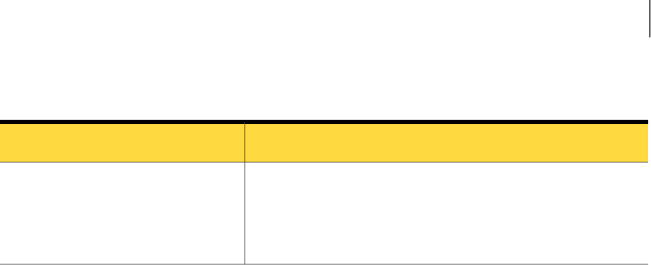
Table A-3
Response file variables (continued)
DescriptionVariable
List of systems where VCS must be uninstalled.
List or scalar: scalar
Optional or required: optional
$CPI::CFG{OPT}{UNINSTALL}
Installing VCS with a response file where ssh or rsh
are disabled
In secure enterprise environments, ssh or rsh communication is not allowed
between systems. In such cases, the installvcs program can install and configure
VCSonlyon systemswithwhich itcan communicate—mostoftenthe localsystem
only. When installation is complete, VCS creates a response file.
See “Response file variable definitions” on page 166.
Theresponsefilethatthe installvcsprogramgeneratescontainsdescriptionsand
explanations of the variables and their values. You copy this file to the other
systems in the cluster, and edit it to reflect the current local system. You can use
the installation program with the -responsefile option to install and configure
VCS identically on each system without being prompted.
To use installvcs in a secure environment
1
Onone nodein thecluster, startVCSinstallation usingtheinstallvcsprogram.
See “Starting the software installation” on page 61.
2
Review the output as the installer performs the initial system checks.
The installer detects the inability to communicate between systems.
3
Press the Enter key to install VCS on one system and create a response file
with which you can install on other systems.
Would you like to install Cluster Server on systems galaxy only
and create a responsefile for systems nebula? [y,n,q] (y)
4
Enterall cluster information.Proceed withthe installation andconfiguration
tasks.
See “Installing and configuring VCS 5.0 RU3” on page 60.
The installvcs program installs and configures VCS on systems where
communication is possible.
171Advanced VCS installation topics
Installing VCS with a response file where ssh or rsh are disabled
